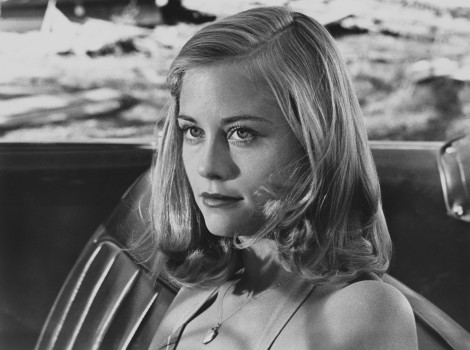‘The Last Picture Show’ peels away the layers of nostalgic Americana

Peter Bogdanovich’s The Last Picture Show stands as a praiseworthy film that couples a lost American innocence with a harsh, forlorn landscape. Some 40 years after its release, it still begs the viewer to redefine our collective image of days gone by. Featuring quietly resilient performances from Jeff Bridges, Timothy Bottoms, Cybill Shepherd, Ellen Burstyn, Cloris Leachman and Ben Johnson, the movie is a visual snapshot that continues to fascinate and is perpetually deserving of study and appreciation.
To say it’s a classic is an understatement. Bogdonavoich’s visionary testament is a redefinition of what classic cinema can attain. It cleverly tells a tale of 1950s small-town America not from a bird’s-eye view or with the trappings of a historian, but from the ground level, in the bedrooms, on the football fields, at the diners and in the movie houses. It painstakingly describes a bygone era, yet the entire 118-minute feature feels as “of the moment” as a documentary on some modern-day social problem. Its lasting, lingering effect is mostly because The Last Picture Show features postcard images that come to life, repeatedly shocking the viewer with authenticity and never settling for tired narrative devices.
Much like the wind that blows in the small Texas town of Anarene, the film is ever-changing and always majestically beautiful.
At its heart, the movie tells the story of a community of people that has lost something — what that is, and how they lost it, is up to the viewer.
Sonny Crawford (Bottoms) senses that something is amiss. With his high-school graduation on the horizon, he is being forced to close one chapter of his life and rev up the engines on adulthood. He’s becoming a man, but what that means in his 1951 society is difficult to ascertain. On the surface, it appears he’s ready for the maturation. He’s had girlfriends and enjoyed their kisses and gropes. He has a best bud, Duane Jackson (Bridges), and finds a father figure in Sam the Lion (Johnson), the town elder who owns the café, pool hall and movie theater in town. He seemingly has no parents, siblings or shackles of any kind. Yet, he can’t seem to get up and leave. He’s not even sure if that’s what he wants to do.
Can’t everything continue on as it did when he was a child and teenager? Can’t he wear his letter jacket for the rest of his life?
Something — someone — is stealing his existence away, but he has no idea how to halt the robbery. He finds some solace with his football coach’s wife, Ruth Popper (Leachman). He envies Duane’s virginal girlfriend, Jacy Farrow (Cybill Shepherd). He takes care of Sam the Lion’s mute son, Billy (Sam Bottoms).
But, still, the way of life he’s so used to is closing up shop. First, he breaks up with his girlfriend. Next, Sam the Lion kicks the bucket. He gets into a fight with Duane; the movie theater closes down; and those damn Texan winds continue to blow, beckoning him to leave this American dream behind and start anew in Dallas or Wichita.
This is not to say that Sonny doesn’t put up a fight. Like a cowboy facing the last vestiges of the frontier, the teenager holds strong, constantly mulling over what it all means, how he fits into this changing topography. He’s self-conscious of his own suffocation — mostly because haunting memories of brighter days linger around him. If he could grasp the intangible wind, he would choke it and demand it stay stationary. It has brought too much disconnection, carrying his friends and lovers to college, the oil business and the Korean War.
Sonny Crawford is both a product and victim of an America that refuses to slow down.
Don’t be fooled by the wholesomeness of The Last Picture Show’s visual feast. Underneath the veneer of family life is lust, sadness, longing and death. Many a character looks off into the distance, observing and pondering. What they see is an unpredictable storm and no chance to avoid its fury.
Bogdanovich, working off a novel by Larry McMurtry, finds an unmatched beauty in the simple surroundings of this small Texan town. Buildings and front lawns take on portraiture characteristics under the director’s careful lens. The faces of these actors — all of whom are exquisite — seem to be weather-beaten and chiseled out of stone, except Shepherd’s fine features, of course. There’s never a sense that one is watching a point-A to point-B storyline. Instead, the audience is privileged to drop in for a few months in this forlorn town. What happens at the end of the film, happened in the beginning: Sonny drives his beat-up pickup truck, wondering about the horizon, worrying about what it all means.
The storytelling, all shot in luscious black and white, is crisp and economical. Although life drags on in the film, the plot never drags one bit. There is a palpable clarity to the proceedings, evidence that Bogdanovich and McMurtry know exactly what they want to say, even if their characters struggle with the larger issues of life.
The Last Picture Show, released in 1971 and nominated for multiple Academy Awards, willy likely never age as a cinematic classic. The reasoning? Sonny’s coming-of-age story is simultaneously authentic to his own life, but also scarily universal. Watching these young kids grow up in rural Texas opens up a window to the mid-20th century, but it also defines something deeper, something that is free from the strictures of any particular calendar year.
Put simply, The Last Picture Show taps into a common thread of the human condition that can be dissected, appreciated and challenged by audiences of any age, of any geographical region, of any sentiment. All that is required of the viewer is to have grown up wanting something more from life, something you can’t quite put your finger on.
By John Soltes / Publisher / John@HollywoodSoapbox.com-
The Last Picture Show
-
1971
-
Directed by Peter Bogdanovich
-
Written by Bogdanovich and Larry McMurtry; based on McMurtry’s novel of the same name
-
Starring Timothy Bottoms, Jeff Bridges, Cybill Shepherd, Ellen Burstyn, Cloris Leachman, Randy Quaid, Ben Johnson and Sam Bottoms
-
Running time: 118 minutes
-
Rated R for sexuality, nudity and language
-
Rating:




-
Click here for more information on the Film Forum in New York City, where The Last Picture Show plays through Oct. 6.

